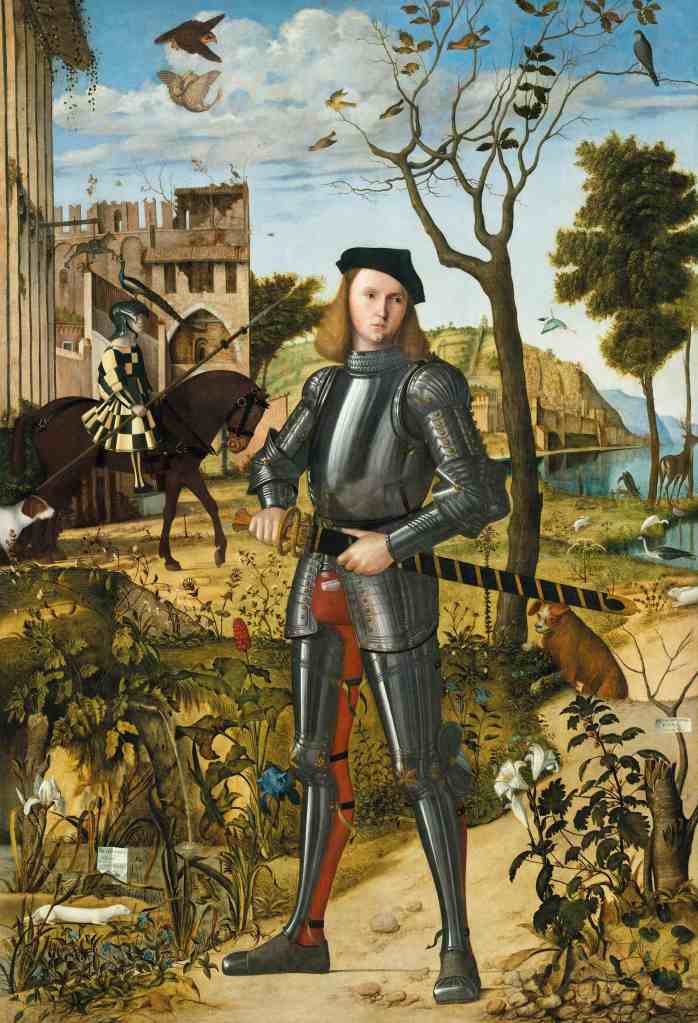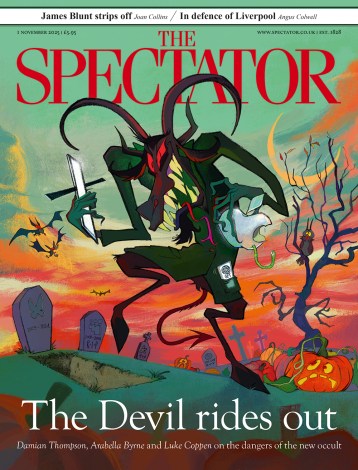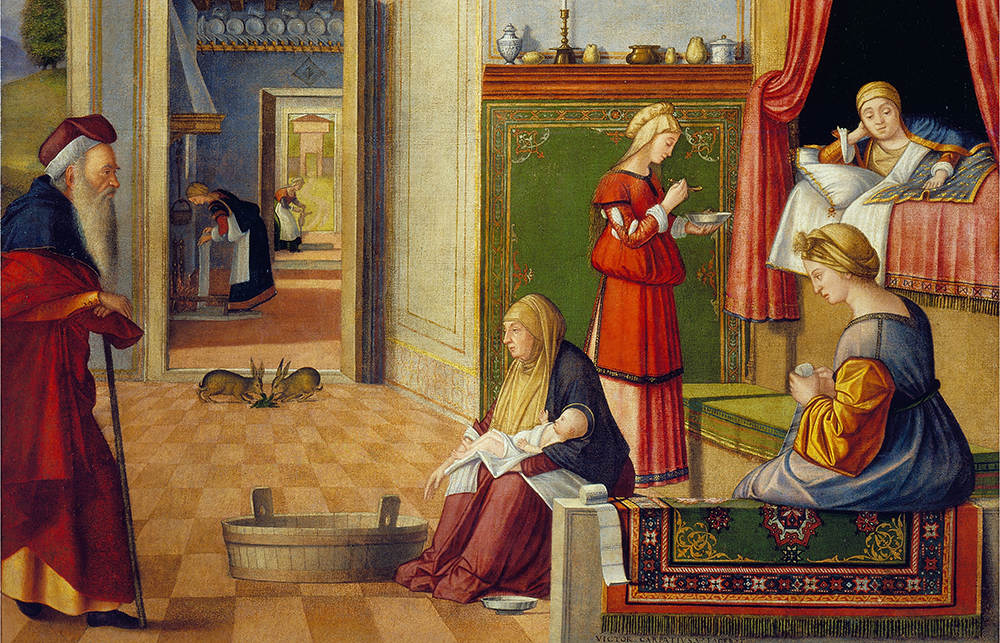David Hockney once remarked that he wasn’t greedy for money, but was covetous of an interesting life. Then he added that he could find excitement ‘in raindrops falling on a puddle’. There are no puddles in My Window (Taschen, £100), previously only available as a limited edition, but Hockney finds ravishing beauty in such sights as the roofs of neighbouring houses, a street lamp or a distant crane.
This huge and sumptuous volume is a visual diary: it consists of what Hockney saw as he lay in bed and looked out at the world each morning between 2009 and 2011. His view was much like anyone else’s, nor is there anything unusual about the window itself. But there is endless variety in the changing weather and light, and also in how he depicts such mundane objects as a vase of flowers on the sill, curtains and blinds.
The results illustrate two of Hockney’s contentions. Firstly, that it’s not the subject itself that’s interesting, it’s the person doing the looking. The other message is the simple but profound one with which he sometimes signs his emails: ‘Love life.’
Hockney finds ravishing beauty in the roofs of neighbouring houses, a street lamp or a distant crane
The late Lucian Freud accomplished remarkable things with the old-fashioned medium of etching. Lucian Freud: Catalogue Raisonné of the Prints (Modern Art Press, £125) by Toby Treves is an impeccably scholarly, definitive study of his work as a maker of prints. Hockney points out that each graphic medium has distinctive possibilities, and also limitations. An etching needle, for example, makes thin, delicate lines. But Freud set himself a challenge: to make his etchings a parallel to his evolving paintings. As a sitter for works in each medium, I noted that he devoted equal (and equally enormous) quantities of time to both.
Current events have taught us a great deal about Ukraine. We have all become aware that it has an entirely distinct identity from Russia – historically, socially and also artistically, as Treasures of Ukraine: A Nation’s Cultural Heritage (Thames & Hudson, £25) makes clear. The art and architecture of this nation are now in danger from bombs and looters. The first image in the book, a spectacular wooden church, was founded in the 16th century, destroyed by Soviet troops in 1947, rebuilt in 2009 and shelled this year. This handsomely illustrated volume demonstrates that there is a great deal to see there, which one hopes will still exist when the war is over.
Most national personalities are complicated. Ukraine’s is no exception, having Scythian, Greek, Byzantine, Polish, Lithuanian, Jewish and many other strands. The same complexity is true of Britain, and the essence of Britishness may be too convoluted to give in words. But a picture can sometimes help. There are plenty of hugely evocative ones in Gerry Badger’s Another Country: British Documentary Photography Since 1945 (Thames & Hudson, £50).
Here is a rich anthology of foggy streets, dingy but jolly pubs, teddy boys, swinging 1960s revellers, top-hatted stockbrokers and so on up to the present. There are many extraordinary exercises in social observation by master photographers such as Martin Parr and Nigel Henderson, and also works by artists using photography as a medium: a collage by Edward Paolozzi from 1948 or a staged tableau by Yinka Shonibare entitled ‘Diary of Victorian Dandy’.
Do these images reveal that Britain in 1951 or 1975 was, as the title implies, a foreign land? It’s a good question. Perhaps the best answer is George Orwell’s: only in the way that you are completely different from yourself aged five yet somehow the same person. Both the dinginess and jollity, for example, remain.
Another constant is the savagery with which we often assail our rulers. No one has ever excelled James Gillray (1756-1815) in the gusto with which he eviscerated the politicians and celebrities of the day, nor in the skill with which, while pillorying them, he simultaneously rendered them vividly memorable. James Gillray: A Revolution in Satire (Yale, £50) by Tim Clayton is the kind of substantial biographical study which would be devoted to a major artist – and rightly, because the works of Gillray are as important as contemporary Georgian portraits or ‘history’ paintings, and much more entertaining (not to mention scurrilous, caustic, scatological, and in the case of several images reproduced here, startlingly pornographic).
All that is obviously in the national grain. So too is the gentle whimsicality revealed in The Quentin Blake Book by Jenny Uglow (Thames & Hudson, £30). There has long-been a tendency to relegate caricaturists and illustrators to a secondary art-historical league. This is unfair. Blake, like Gillray – and for that matter Hockney – has an utterly distinctive personal line, recognisable at a glance. This publication reveals that his idiom hasn’t changed greatly over the years (he was born, in Sidcup, in 1932). Included in this retrospective of his long career are a selection of Spectator covers from the 1960s, suggesting this magazine’s quality of contributors has long been high.

Among old masters, the Venetian Renaissance painter Carpaccio is often given lower status because his talent was for narrative: ripping yarns in paint. He couldn’t depict the Madonna and saints with the reverent solemnity of his older contemporary Giovanni Bellini. But nobody ever produced a better dragon than the one skewered by St George in a picture he did for the confraternity of the Dalmatians around 1505. Scaly, spiky, ferocious and doomed, it would fit perfectly into the world of Harry Potter. Vittore Carpaccio: Master Storyteller of Renaissance Venice by Peter Humfrey (Yale, £45) is the catalogue of a major exhibition not coming to Britain. Written by an eminent scholar, it is the best available work on this beguiling artist.
Those interested in the overlap between gastronomy and art might be diverted by The Gourmand’s Egg (Taschen, £40). In addition to a large number of recipes and anecdotes, the book contains a pioneering foray into a neglected subject: the egg in art. Once you start looking for them, they are everywhere – hard and soft, raw and cooked – from Piero della Francesca to Jean-Michel Basquiat and Sarah Lucas (the latter worea couple of fried eggs on her chest in a celebrated work). Lucian Freud is not included, but several of the illustrations brought to mind his ‘Ode to a Fried Egg’, penned when he was at prep school. It ends: ‘Here upon my chalk-white plate you sit/ Greasy and disgusting… ugh!’






Comments